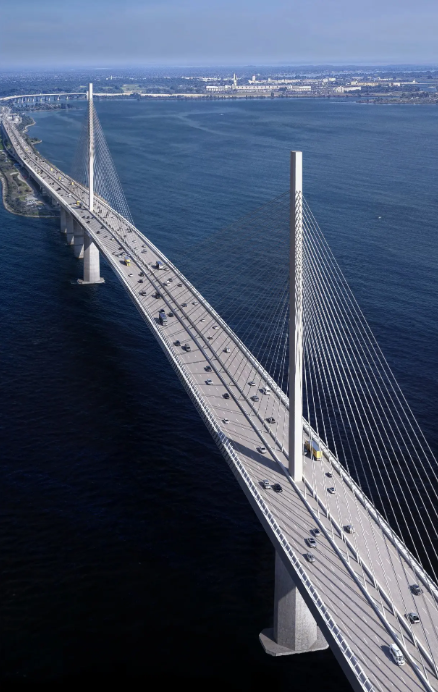An Italian firm has been working on a design of a new bridge in Baltimore following the maritime disaster in March.
The Francis Scott Key Bridge on the Patapsco River in Baltimore was the scene of a maritime accident after a vessel, Dali, rammed into the bridge.
Webuild is a global player in the construction industry. CEO Pietro Salini says the company is aware of the importance of this infrastructure from a logistical and commercial point of view, adding that more than 1.4 million local residents and tens of thousands of commuters have been directly affected by the bridge’s collapse.

Webuild has expertise in bridge construction
Webuild was involved in constructing the Genoa Bridge after it collapsed in 2018.
The company’s proposal for Baltimore includes a cable-stayed bridge to improve safety, adaptability, and sustainability. The bridge will prioritize safety for navigation, accommodating even larger ships with a clearance of 213 feet (65 meters), much greater than the collapsed bridge.
Additionally, it will stretch approximately 2,300 feet (700 meters) with main pylons positioned in shallower waters, away from the navigation channel, ensuring the Port of Baltimore remains a vital international port.
Plans also include widening the roadway by adding one lane in each direction and expanding emergency lanes to manage increased traffic. Smart features will enhance traffic management and enable predictive maintenance. Sustainable materials will be used to protect the Patapsco River ecosystem.

Navigation channel for vessels
The concept for the Baltimore construction is in collaboration with Carlo Ratti, co-founder of the design studio CRA-Carlo Ratti Associati. “Opting for a cable-stayed solution enables the piles to be positioned at a safe distance, well away from the navigation channel used by large vessels and hence preventing the risk of a tragedy such as the one of March 26 happening again,” says Ratti.
As one of the oldest ports in the United States, it has a long history of serving the nation’s trade needs and has evolved over time to adapt to changing shipping technologies and trade patterns.
Photo Credit: US Army Corps Engineers (Facebook)
About the author
Sharl is a qualified journalist. He has over 10 years’ experience in the media industry, including positions as an editor of a magazine and Business Editor of a daily newspaper. Sharl also has experience in logistics specifically operations, where he worked with global food aid organisations distributing food into Africa. Sharl enjoys writing business stories and human interest pieces.














